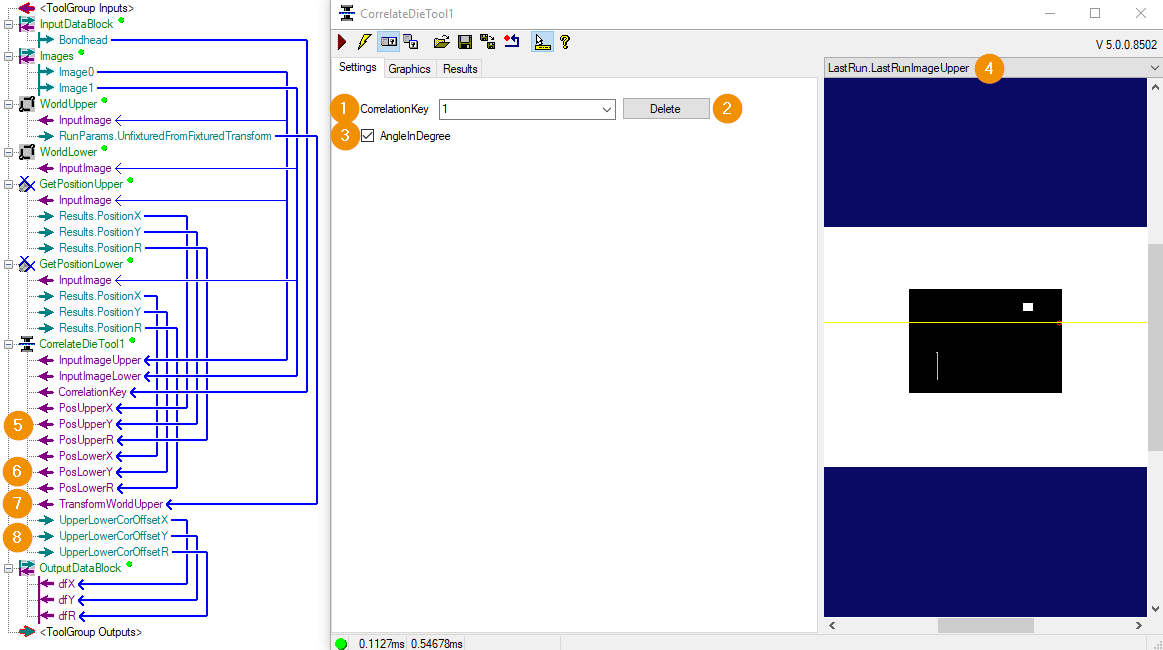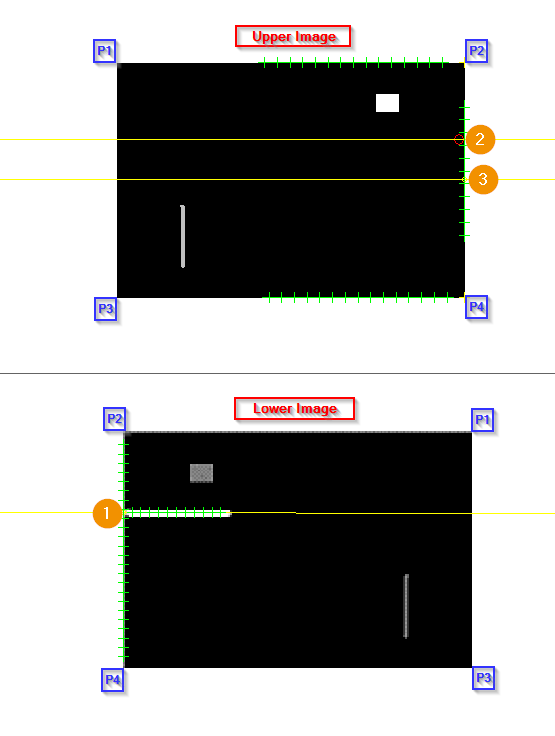Upper-Lower Correlation¶
The upper-lower correlation tools are used with flip-chip bonders. Here, a chip must be placed exactly on a wafer. The position of the component is determined by the structure on the underside. The structure on the bottom side cannot be seen with a camera from above the wafer. Therefore, the offset (X, Y and rotation in world coordinate space) between the structure on the bottom side and a structure on the top side is determined in an upper-lower correlation station with two cameras. One camera (upper-camera) sees the component from above and a second camera (lower-camera) sees it from below. The offset is stored in the upper-lower correlation and can then be added back over the wafer (destination camera).
CorrelateCamerasTool¶
This tool is used to establish a relationship between the lower and upper cameras. For this purpose, a calibration mirror is moved between the cameras. Both cameras see the same rectangle. The CorrelateCameraTool performs the following steps:
Find the corner points of the rectangle in the upper camera image.
Find the corner points of the rectangle in the lower camera image.
Set the N-N Fixture tool to the points found.
Run the fixture tool.
Notice the transformation.
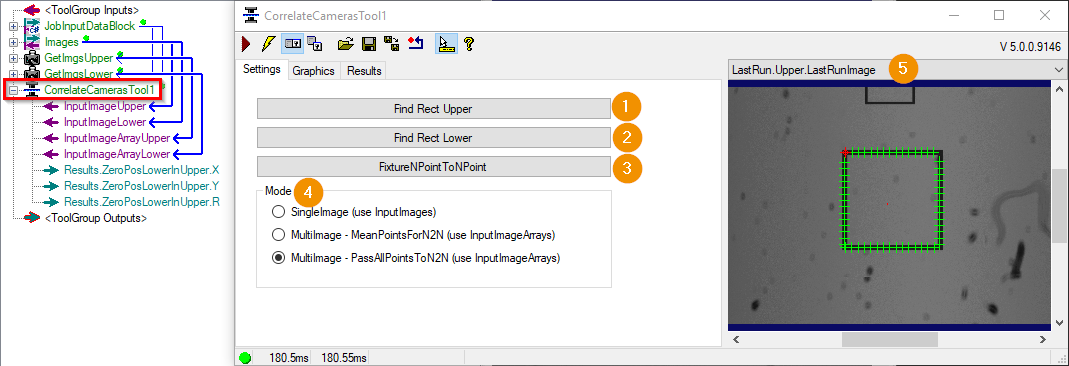
Acquire images: The camera images are captured by this tool. The upper image is image source index ZERO of the parent tool group item, the lower image is image source index ONE.
Train tool with image number: Selection of the image number to be used for training the tools.
Fixture input images: The input images are fixed using a Patmax tool.
Run Fixture InputImages: Run image fixture.
Find Rect Upper/Lower: Einstellungen für das Gefasoft InspectEdgeTool um das Rechteck im oberen/unteren Kamerabild zu finden.
Fashion:
SingleImage: Uses the images of the input terminals InputImageUpper and InputImageLower to determine the corner points of the rectangles.
MutiImage - MeanPointsForN2N: Uses the images of the InputImageArrayUpper and InputImageArrayLower input terminals to determine the corner points of the rectangles. The corner points found in the Upper and Lower images are averaged and then passed to the FixtureNPointToNPoint tool.
MutiImage - PassAllPointsToN2N: Nutzt die Bilder der Inputterminals InputImageArrayUpper und InputImageArrayLower für die Bestimmung der Eckpunkte der Rechtecke. Die gefundenen Eckpunkte in allen Upper bzw. Lower Bildern werden dem FixtureNPointToNPoint Tool übergeben. (Obsolet: Nur sichtbar, wenn der Modus vorher aktiv war, oder die Umgebungsvariable VIPER_MODE=DEV gesetzt ist.)
FixtureNPointToNPoint: Settings for the Cognex N-N-FixtureTool to calculate the transformation from the lower to the upper camera image.
Result Space name: Name of the coordinate system in which the results are returned. All coordinate systems of the input image can be selected.
Result Angle Unit: Unit of rotation. RAD, DEG and DEG45 can be selected. DEG45 is an angle adjusted to 45 DEG.
LastRun.Upper.LastRunImage: The red circle shows the center of the lower camera image, shown in the upper camera image.
AddCorrelationOffsetTool¶
This tool adds a correlation offset to the part position. I.e. one searches for the component position (reference position) in the upper camera image (destination camera) and receives the position in the lower camera image. The correlation offset must have been filled before by the CorrelateDieTool. The tool needs as input the position and the rotation of the component in the upper camera image. This can be determined, for example, by the GetPositionTool. The positions must be passed in world coordinate space or pixel coordinate space.
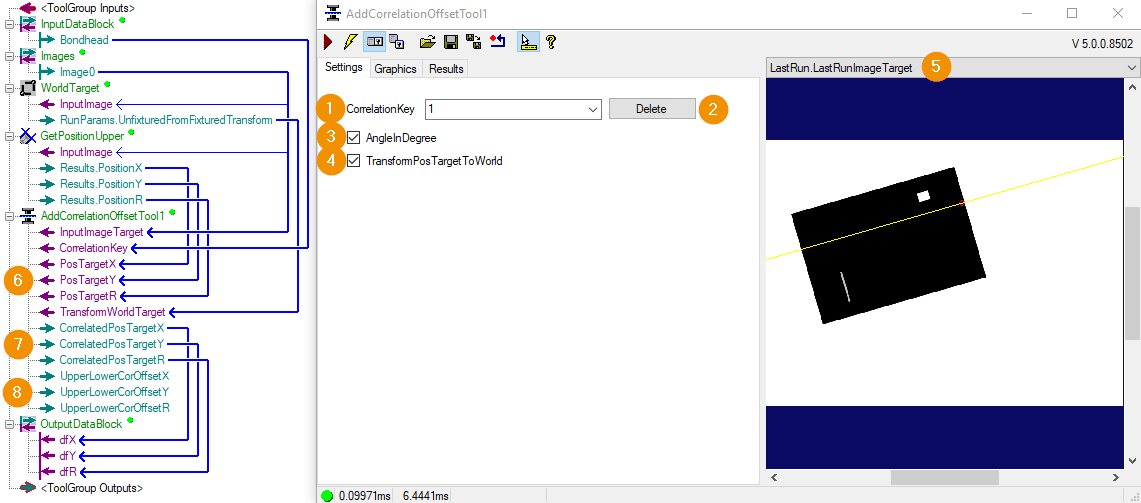
CorrelationKey: Name of the correlation data to be used. CorrelationKey is filled by the command parameter Bondhead.
Delete: Deletes the selected correlation data set.
AngleInDegree: Specifies whether the rotation is in degrees or in radians.
LastRun.LastRunImageUpper: The red circle represents the position of the component in the lower camera image, shown in the upper camera image. The yellow line represents the rotation of the component in the lower camera image in the upper camera image.
TransformPosTargetToWorld: Must be selected if the position is passed in pixel coordinate space.
PosTargetX/Y/R: Reference position in the upper camera image. The position must be passed in world coordinate space or pixel coordinate space.
CorrelatedPosTargetX/Y/R: Component position with correlation offset.
UpperLowerCorOffsetX/Y/R: Stored offset (X, Y and rotation in world coordinate space) between the relevant position on the bottom and the reference position on the top.
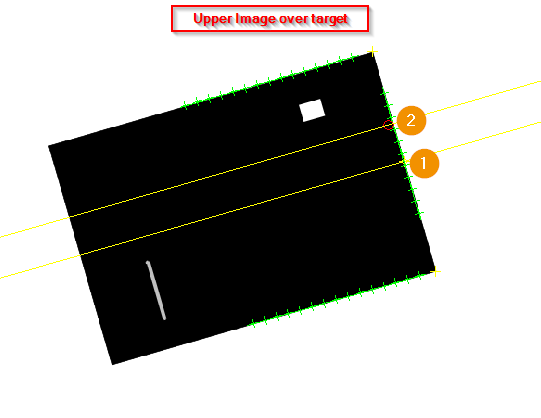
PosUpper: Reference position in the upper camera image.
PosLowerInUpper: Relevant position of the lower camera image, displayed in the upper camera image.
